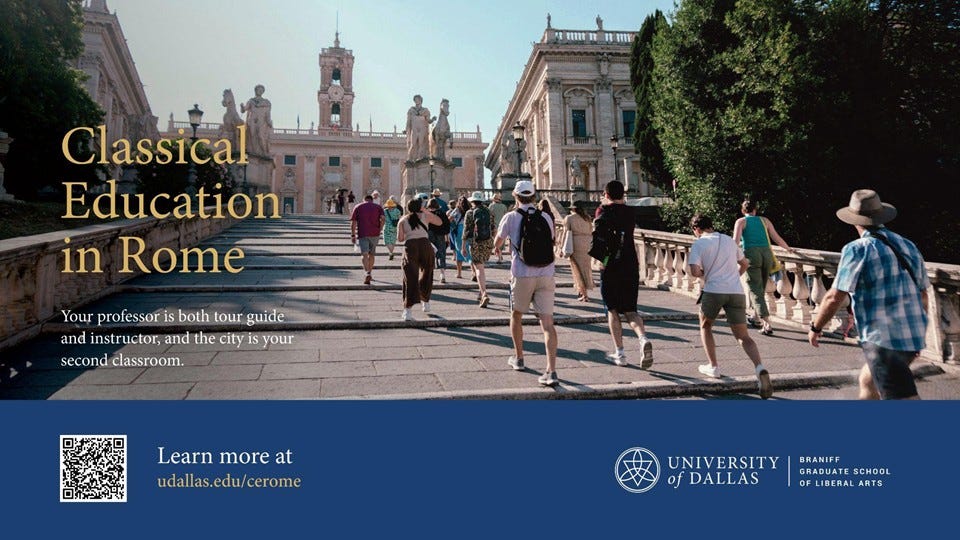As an Amazon Associate I earn from qualifying purchases
Louise Cowan did much in her lifetime to advance and uphold the sacred authority of the teacher. She honored and revered teachers. Listening to a lecture of hers recently, I heard her describe why she believed teachers must be honored and revered.
She claimed that our history, our past ought really to be considered sacred. She defined kleos–a Greek word for renown or glory–not in terms of fame, but as the region of mystery and memory where heroes and great events reside. In this region, timeless virtues such as courage and prudence are attached to historical events–events and virtues that are just as real as empirical data. She said, “Teachers are the high priests of this region of communal memory. Without teachers only bits and pieces of it can emerge into ordinary life and perhaps in distorted form.” Without teachers, only fragments of communal memory break into the present day. Only bits and pieces of kleos emerge–distorted shards that fail to ennoble or inspire.
The teacher journeys into the land of kleos through history, literature, myth, even theology and philosophy. It becomes the standard by which a student measures himself and others. It becomes the imagination’s handle upon reality. It is a sacred region into which the teacher brings her students.
She stands as the priest, the saint, the sage, the guide who can bridge these two terrains: the present with its contemporary events and concerns and the communal memory filled with soul-stirring kleos. When we ask students to participate in liturgies that include the memorization of poetry, recitation of catechisms, singing of hymns, or chanting of scripture, we are asking them to transcend time. To journey with us into timelessness—a place where life is glorious, deeds are noble, and change is possible. Or as Cowan said, “where heroes and great events reside.” In that place, they are able to imagine what they might be called upon to do, and they can put on the virtue of others who have done it before them. They can dwell with heroes and heroic action as a normal course of the school day when their teacher is willing to take them there.
Jacques Maritain, in his work Art and Scholasticism, says, “Through the virtue of Art present in them, they in some way are their work before making it; they are conformed to it, so as to be able to form it.” When we journey into this land of communal memory, we allow students to “become their work before making it” and to be transformed by the kleos “so as to be able to form it.” By going into a land where you are not the hero and your self-expression is irrelevant, we actually equip students to become who they were created to be. By learning self-denial, they truly do find themselves.
One of the ways in which teachers can routinely journey into this land of communal memory is through the creation and observation of classroom liturgies. The content of our liturgies puts our students in touch with this communal memory which creates self-denial, but so also does the liturgy itself. Teaching students to follow a liturgy is a form of virtue formation. In repetition we submit, we are choosing to say this is not about me. I am not the most important person in the room. This is about being part of a community. This is about the words we are saying and why we are saying them. And all together this thing we are doing, is more important than me.
While the rote, routine, and repetitive nature of liturgy can rub us the wrong way, it can also be very liberating. James K.A. Smith warns in his book, You Are What You Love, that when we move away from incarnate modes of formation, specifically in the church, we start to equate extroversion with faithfulness. And I think this is a warning worth attending to. Smith makes a poignant point: “When you have only seen forms of piety that value spontaneous expression and cliched sincerity, to be given the cadences and rhythms of the Book of Common Prayer can be like receiving the gift of tongues.” By letting our students put on these beautiful words and ideas through repetition and memorization, we allow the words to shape their aesthetic sensibility and understanding of how language works—what it’s capable of. When they use them later, as part of their own expression or language, they are actually creating something meaningful and beautiful because it is an expression based upon something—informed by something.
Liturgical practices in the classroom create self-denial while at the same time charting a path for the teacher to walk between time and timelessness. These liturgical practices ask students to submit to repetition, to put on words that are not their own, to participate in a communal experience. They also act as touch points to the glory—the kleos—of our tradition and in doing so give students the ability to make the art of virtue within themselves before they are called to produce that virtue externally in real time and space.
Mandi Gerth lives in Dallas, Texas where she teaches and writes about classical education. She is the author of Thoroughness and Charm: Cultivating the Habits of a Classical Classroom. For over twenty years, she and her husband have labored to build a family culture for their five children that values books, baseball, museums, home-cooked meals, and conversation about ideas. You can follow Mandi on Instagram or subscribe to her substack here.





